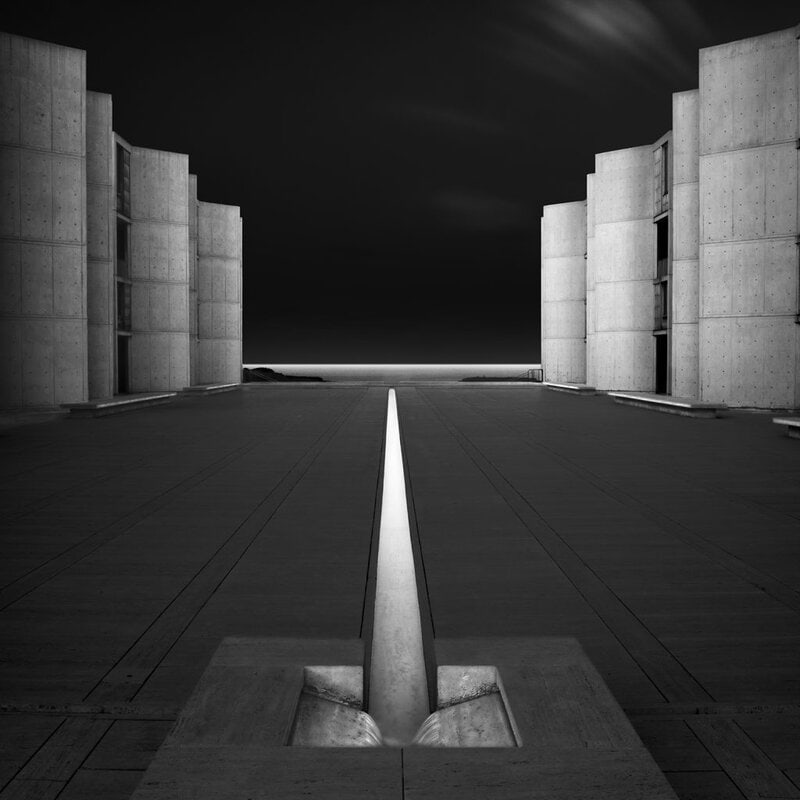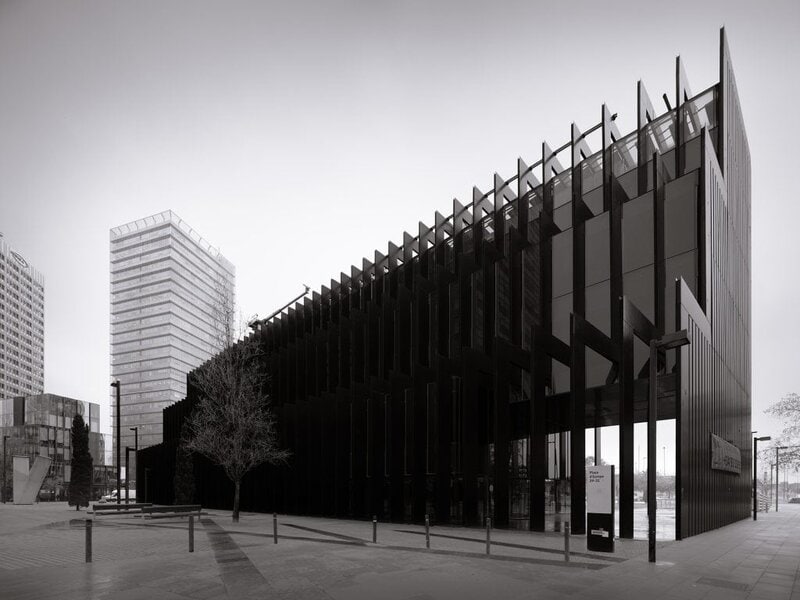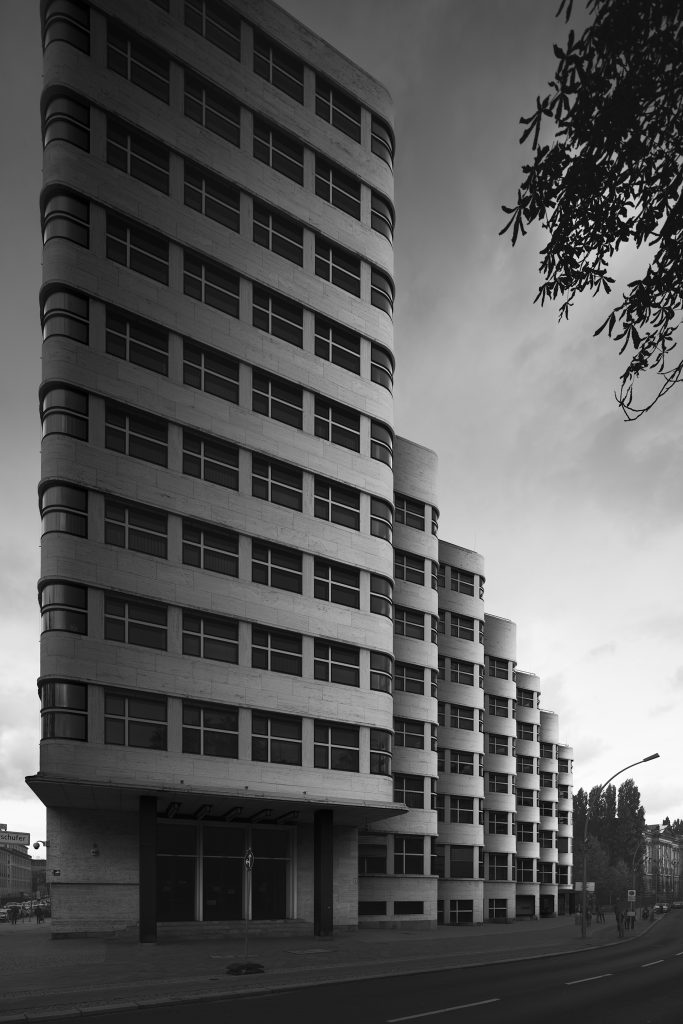Introduction
Fine art architectural photography is not what most people think it is. It goes beyond aesthetics, skills, and a specific visual style. But as usual, in this age of an overload of information and misinformation, we are often tempted to take the wrong piece of information to digest without any research. The quicker it can be digested, the more we will be drawn to it.
A more nuanced and meaningful view on what art in photography is or what fine art architectural photography truly entails will take time and effort but it will give you more appreciation and understanding for great architectural photographs and for art in general.
With this article, I am trying to give a more nuanced view, while at the same time, keeping it short, practical, and concise, which could give you a good starting point for more research. And I would encourage strongly to research the topic of art yourself. Do not take my word, but use it as a trigger to find out the truth about art yourself.
But before I start, what gives me the credibility to be even listened to and to suggest discarding the majority of what you have read, listened to, and think you know?
For what it’s worth, I was one of the pioneers of this style in architectural photography that has become synonymous with fine art architecture photography when I not only introduced the visual style but also how this style can be produced in Photoshop 16 years ago. And even though my style has evolved and changed over the years, I can describe what led me to create this style of photography years ago and what I included in my considerations.
I’m a strong advocate of presenting opinions that are substantiated but individualized. And at the same time leave room to change my mind when arguments are strong enough to convince me.
For now, my premise is that ‘Art is consciousness manifested’ and that comes with the acknowledgement that each instance of consciousness is unique and therefore should be the universal foundation of authentic art. At the same time, this premise and acknowledgement will make artistic style, skillset, and aesthetics, subsidiary to art being first and foremost an expression of a subjective experience.

Fine Art – more than just aesthetics
Fine art cannot and should not be equated with aesthetics only. But it can be even worse if you equate fine art with one specific visual style and a skill. They all form a part of art, but the most important part of art is neglected when a creation only addresses aesthetics and skills.
Let’s clarify what the most important part of fine art (architecture) is by breaking it down and giving a personal definition of what fine art is in my view.
First, there is not just one correct definition of what (fine) art is. There are as many correct definitions as there are humans, but you have to have YOUR definition, YOUR conviction of what art is. Nothing more and nothing less.
Fine Art – Definition, Purpose and Importance
Fine art is not just a visual style or a skill. It includes and goes beyond both. If it were only a skill or a visual style, then AI would soon surpass us as artists, and by the time you’re reading this, it probably already has.
The essence and importance of art is that it is the external expression of an authentic and internal subjective experience that cannot be expressed otherwise. Art is the manifestation of the only thing that is always unique and makes you unique: consciousness. And AI doesn’t have that, nor will it ever have.
The purpose of art, therefore, is to evoke an experience within the observer that resembles the expressed experience, which only exists within the one expressing it – the artist. It is a concrete manifestation of an experience in a language that words cannot describe directly. It can be described with images, or with sounds, with movements, or with poetic words, but never directly.
Art then serves as a portal to a meaningful part of someone else’s consciousness. No one can have access to someone else’s consciousness, and yet with art we have a portal with which we can have access, albeit only partly and briefly. And this is where art plays a role in society that is unique and has an importance that will only increase in the age of artificial intelligence.

The Fundamental Difference Between AI and Human Creative Expressions
Hence, art initially has nothing to do with a style, visually or otherwise. Those who insist on referring to fine art photography by referring to a (visual) style only are doing a severe injustice to the profundity and depth of an authentic artistic expression. They are doing an injustice to themselves as humans with the sole capacity and ability to express their conscious and unconscious inner lives. You, the artist, you can do justice to the unique being you are and to art, just by expressing yourself in whatever way you deem fit. Unbounded by styles and by rules. AI can replicate your style and methods, but it can not replicate a subjective experience.
And therefore, you are the master, and AI will always be your emissary, but only when you give priority to what makes you unique and not to technique or style: your subjective experience. Let me give you one simple and maybe obvious example of why AI cannot replicate a subjective experience and why that is so important in the context of art.
You turn off the computer or network on which AI is running, and you turn it on again after some time. Do you think it has suffered existential dread? Do you think it lost something essential to function properly after you turned on the computer again? No. On the other hand, if you “turn yourself off”, you cannot be turned on again. And if they can awaken you from the dead, you most likely have suffered irreparable damage.
As you can see now, it is the inner experience of a myriad of human emotions, feelings, fears, and expectations, directly or indirectly related to our mortality, separating us from machines. Those feelings give meaning and reason to our lives and also give reason, meaning and importance to art. Art is the only way through which we can directly witness what another human is experiencing, no matter how brief, and experience ourselves what another is experiencing. No matter how brief. Human experience, what it means to be alive, cannot be replicated, only manifested in an authentic expression of art. Because AI doesn’t deal with mortality.
So, art is all about expressing what we cannot contain anymore inside our own unique instance of consciousness. And at the same time art serves as a portal to something we cannot access otherwise: another instance of human consciousness.
Stieglitz’s Equivalents and Symbolic Expressions
We call photography fine art when the main object depicted in an image is the symbolic carrier of an experience that the artist expresses. The meaning is not in the objects in the image; it is in what is suggested and what transcends the material depiction.
An example from the spiritual father of fine art photography, Alfred Stieglitz.
In his now-famous series of photographs called Equivalents, Stieglitz depicted clouds. And clouds only. When asked why he depicted clouds, Stieglitz answered that he didn’t depict clouds but his internal world of emotions, for which he used clouds to symbolize his emotional world. The clouds were the carriers of the meaning behind the photos. They were not the meaning itself. In other words, the subject matter is implied, not depicted. What is depicted is the symbolic object matter.
With this in mind we can break down fine art architectural photography.
Fine Art Architecture
Architectural photography, without the label fine art, has as its main SUBJECT the architectural object and is all about the celebration of its design and its designer. The architectural photographer will do justice to the design, to its environment and to its proportions. It has no other purpose than to celebrate the design and the architect.
Fine art architectural photography has as its main OBJECT, the architectural object, and as its SUBJECT MATTER the intention, the subjective experience of the artist. It is that subjective experience that is being expressed by using the architectural object as a symbol in conjunction with light, shadows, and colors. And it can be done in any visual style. That is the essence of fine art architecture, not a specific style that is striking or popular.
In both cases, conventional architectural photography and fine art architectural photography, there are a few principles that need to be respected and that form the foundation of architectural photography.
Below I will highlight a few of the most important principles.

Principles of (Fine Art) Architectural Photography
1/ Technical correctness: keep the lines straight. It is the foundation. This does not mean you can not tilt your camera to shoot a detail, an abstraction, or to emphasize a specific form that you cannot capture when shooting straight on with all the lines straight. You can as part of a series for example that also depicts the building in its correct orientation or when you only shoot abstracts. The latter I would label more as abstract photography using architecture than pure architecture photography. But if you do tilt your camera, then you should refrain from including a straight horizon. Shooting an architectural object with a straight horizon but without correct verticals, has little to do with architectural photography. If you include a straight horizon, keep the verticals straight. Call it whatever you want, but I don’t call it architectural photography. You can break the rules only when you know what the rules are in the first place. If you don’t know any rules, then just keep the lines straight.
2/ Architectural photography has different rules for composition. Rules of third or the golden ratio, they are just generic rules for composition. They only play a secondary role in architectural compositions where 1-point or 2-point perspective rules, non-axial or axial views with 1 or 2 facades play a far more important role. The generic rules of composition only play a secondary role, for fine-tuning at best, but are not decisive.
3/ Negative space is not a requirement for any photograph, they only play a role in minimalistic photography, whether they are landscapes, still life or portraiture, but they don’t play a role in architectural photography. What counts in architectural is functional space: how do you use the given space effectively and efficiently to celebrate the design of the building? How do you use the given space to put the object in the right context? You don’t need room to ‘breathe’, you only need room to use. If you need to convey a sense of calm and tranquility, then by all means do so, but it is surely not the essence of architectural photography.
4/ Don’t be afraid to cut off parts of buildings, one of the first great artists who depicted architectural objects was 18th century Italian draftsman Giovanni Piranesi and he deliberately cut off tops or other parts of buildings to create tension, to give a sense of scale, to create dynamics, to denote a proximity to a building, etc. Another important element in his work was the use of vertical framing elements. The great architectural photographers from the past century took inspiration from him and so do I.
If You Want to Know More
There are many more interesting principles and rules to acknowledge and respect in architectural photography and each one of the principles I mentioned can be elaborated on in detail with examples but these were just a few of the principles I found important to highlight.
If you want to know more about fine art, in the context of architectural photography and how to practice it in a way that does justice to fine art architectural photography then first, I am in the process of writing a book on the important relationship between Art and human consciousness in the age of AI. This will all revolve around the practical use case of fine art architectural photography to illustrate the concepts and premises. Due to be finished in the second half of 2026.
Furthermore, I can highly recommend attending one of my upcoming architecture workshops in Hamburg in August or Milan-Rome in October. You will leave the workshop with a deeper understanding and appreciation of fine art and also with the correct way of photographing and processing architecture in practice with compositions that are beyond the mainstream. I will provide composition techniques and practical approaches like the maximum point of perspective, the intersection of overview shot and maximum point of perspective for surprising compositions and much more you won’t find anywhere else.
Finally, it needs to be clear that all my articles, and blogposts cannot be distributed or partly copied and then integrated in an article or post to conceal that it has been copied, without my prior consent. If you like what I wrote, and want to use my articles or parts of it, then just be fair and credit the original author.